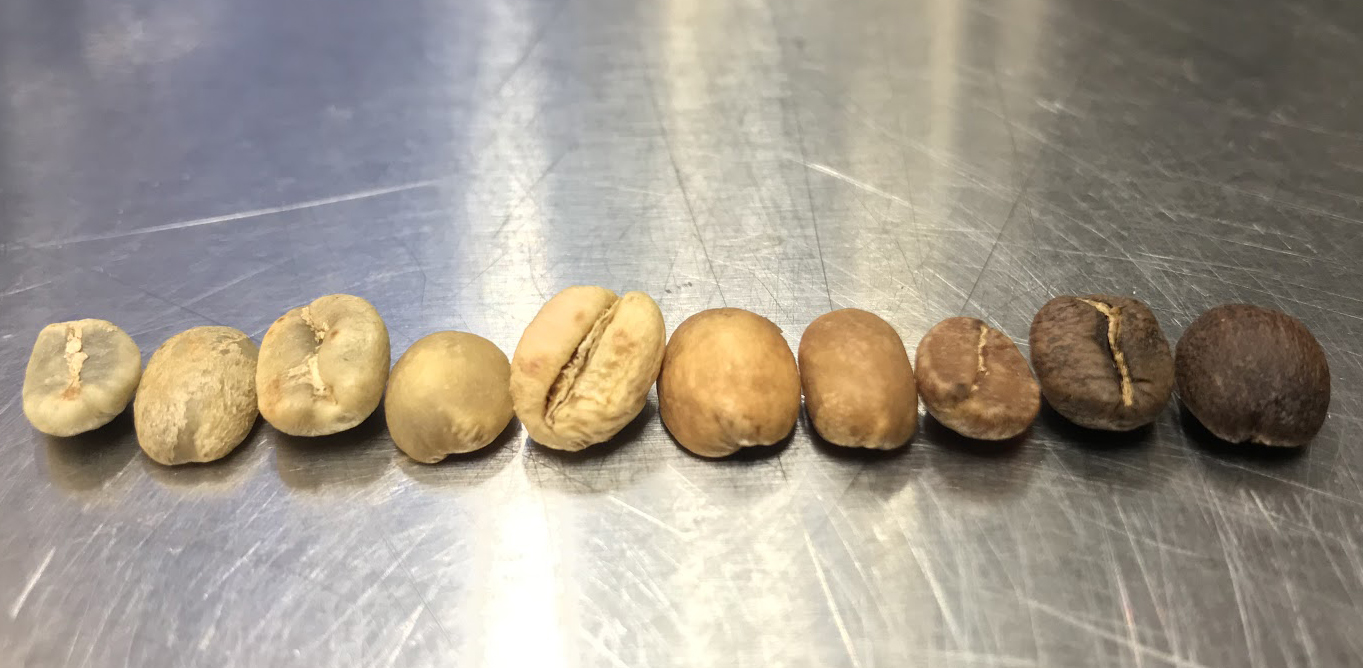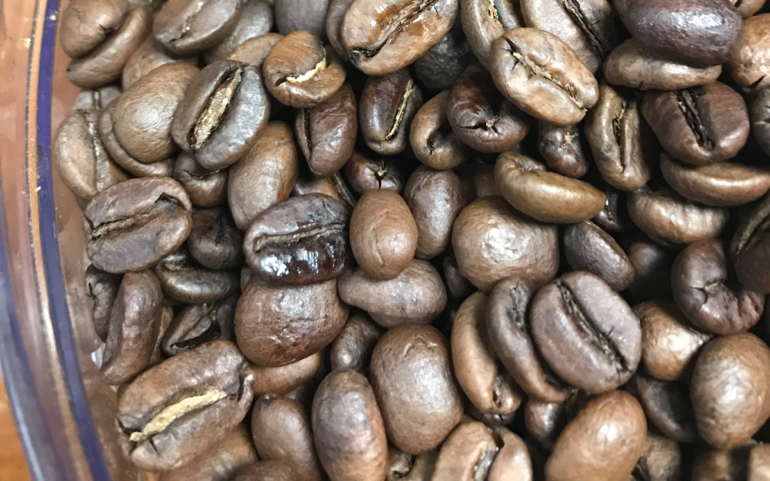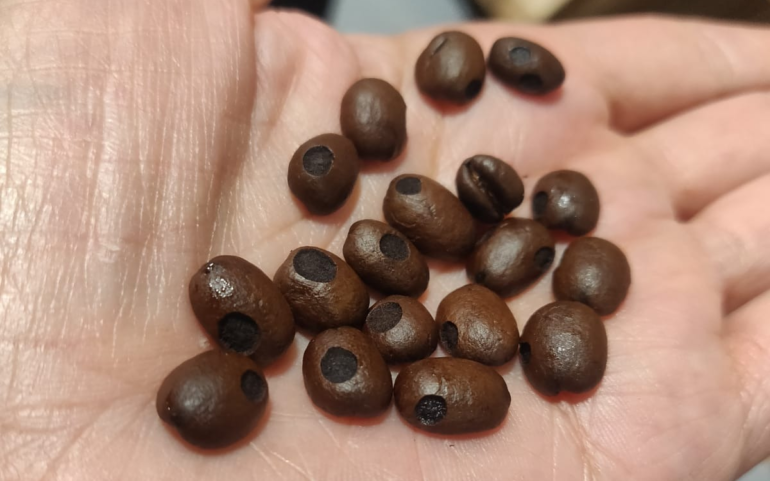
How to Avoid Roast Defects White Paper
Tell us a little about you, and get the detailed technical white paper.
Introduction to Coffee Roasting Defects
Navigating coffee roasting, and the coffee roasting can be a daunting task… especially if you are new to the community. Though our industry is relatively friendly (especially in comparison to others) the amount of information presented within easy grasp is nowhere near as robust as in other industries, or even other parts within our own industry. So measuring yourself against others can be tricky; yet people are very interested to know whether they are doing an okay job, or how they stack up against other members of the coffee roasting community. What should they do? What should they avoid doing? To me, there is a great deal of room for personal preference on the part of company ownership, employees, and consumers when it comes to deciding what “good coffee” means. After all, who am I to be the gatekeeper of the definition of good, specialty coffee?
However, for the sake of helping coffee roasting professionals navigate some of the nomenclature around coffee roasting “defects” I find it pertinent to remove ambiguity and have some real discussion around what these words can mean, how to correct them if they are a problem you’re experiencing, and when to do as my grandmother said and “listen to everyone’s opinion and then do as you damn well please.” (RIP Grandma Franny).
“Wildcard B$#@%s” – Charlie from It’s Always Sunny
Two brewing parameters (especially when cupping / doing QC) have an incredible impact on roast profile design and are often ignored by coffee roasters. One parameter is your coffee to water ratio (in your cupping bowls and in your brewing of the coffee) and the other is the composition of your water. Because of the impact of these two variables, what is true for one person’s brew of the coffee may not be true of another person’s brew of the coffee. Which means that the way a coffee tasted for one person is not going to be true of everyone’s perspective simply because of these seemingly minor differences.
Roast Defect Categories
Because of these differences in perspective due to differences in extraction (and differences in preference) I think it is necessary to break the “roasting defects” down into two separate categories. One of the categories being those roast defects with obvious physical markers which can be spotted and corrected irrespective of taste or preference, namely the “objective roast defects.” The other category has no visual indications on the surface of the bean, and is based on people’s ability to taste, as well as their preferences. Though some suggest that there are markers within the recorded roast profile curve… there is a significant amount of disagreement amongst roasting professionals as to how to identify them. Because of the lack of clear visual signs on the beans, identification by taste (which is skewed by extraction and preference), and wide disagreement within the industry I have opted to label these as “subjective roast defects.”
Subjective Roast Defects
I’d like to begin by addressing the subjective roasting defects because these are the ones which roasting professionals often focus most on, and because I enjoy a lot of the jokes that I get to say in this section. Since its COVID times and the world feels like it’s falling apart every now and again, I am starting with the section that “sparks joy” for me.
This category of roast defect contains:
- Underdeveloped
- Overdeveloped
- Under-roasted
- Over-roasted (roasty)
- Baked
These terms, often wielded like weapons among the coffee roasting community, are only 100% certain to mean one thing: that the person using this term did not like your coffee.
Because of extraction differences, and the preferential nature of coffee, one person’s underdeveloped could easily taste overdeveloped to another person. What is roasty to one person could be under-roasted to another. So every defect spoken within this category needs to be taken with a grain of salt. For the sake of a clearer understanding, let’s take a minute to look at what each of these words could mean when it comes to critiquing a roast and what you can do about it if you choose to.
Underdeveloped vs. Overdeveloped
Underdeveloped generally means that someone thinks that you could have spent a little more time between the beginning of First Crack and when you chose to end the roast. Development time has a lot to do with the color difference between the whole bean and ground color. In other words, the interior bit’s of the coffee’s level of roast in comparison to the exterior bit’s level of roast. What that means to the person speaking can be totally different though, and I’ve noticed that many times people use underdeveloped and under-roasted interchangeably.
Overdeveloped, as it stands to reason, would indicate that the speaker thinks that the roaster gave the coffee too much time between the beginning of first crack and the end of the roast. Overdeveloped is sometimes used by people to mean over-roasted/roasty, but the two are caused by different things.
The problem with both of these statements is the wide semantic domain in which they are used. Part of it is because many within the roasting community don’t know how to define or make distinctions, and some of it is due to people misattributing flavors.
Under-roasted vs. Over-roasted / Roasty
Here we have a slightly different set of definitions. Instead of being time based, these defects have more to do with the finish temperature (usually according to the bean temperature probe) or finished color. Thus instead of too much or too little time, it is because of an overly hot or cold end temperature, or overly dark or light roast color. Under-roasted would mean the speaker thought the roaster should have ended with a higher bean temperature, and over-roasted or roasty would usually indicate that they feel the operator ended with too high of an end temperature.
I’ll make a special aside for the word “roasty,” not that we haven’t already addressed its meaning, but it deserves some special attention. The word roasty has come to be an insult within our industry. This speaks to two problems. One, that anyone would feel the need to comment derisively on someone else’s coffee speaks to the general insecurities coffee roasters. People often feel the need to put others down to feel good about what they are doing, or to try and differentiate themselves. I would humbly suggest that you can feel good about yourself and be proud of your work while seeing the beauty in alternative expressions of what coffee can / should taste like. Secondly, using the word “roasty” derisively also stems from a potentially faulty assumption that light roasting is best, and the best way forward and anything that tastes of roast is automatically bad. The real truth is that roast sells, and generally speaking consumers prefer to be able to taste some amount of roast in their coffee.
I digress.
Baked
The defect known as “baked”, or “baking” is possibly one of the more difficult to nail down. There are a number of clear definitions from respected voices in the coffee roasting industry, and they all (to one degree or another) disagree with one another. As with the other terms within the “subjective roast defects” it almost certainly means that the speaker finds something unpleasant about your coffee, but beyond that it can mean one of three things (or anything in between really).
- The coffee came down in temperature, and then back up in temperature sometime after caramelization began. See old SCAA definition.
- The coffee had an overly long development time (over-developed). See new SCA definition and work by Morten Munchow.
- The rate of rise of the bean temperature probe had a sharp drop followed by a rise. See dipping and flicking ala Scott Rao.
For me personally, I struggle to come to a definition that fully works for me. I have a level of distrust of most thermocouples because of lag / smoothing introduced to their readings due to probe sheathing thickness. This makes me have some difficulties with Scott’s definition… though I would agree that being out of control of the bean temperature post first crack is a dangerous thing (it’s something I’m still researching). I find that over-development is a sufficient descriptor to define Morten’s approach, and so I don’t see the need to classify it as baked. I have personally experienced the old SCAA definition, however, and can see how it (in some ways) fits within some of the paradigm given by Scott.
Essentially what I am saying is that I agree with all of them… with caveats haha.
Objective Roasting Defects
Objective roasting defects are great! Not because they are desirable or anything. They are great because for the most part they are binary. They either exist in your coffee, or they don’t. There isn’t really much of a grey area. So, without further adieu, let’s dive in.
Scorching
Scorching is a roast defect caused when the coffee comes in contact with metal that is too hot. The sources of scorching can vary wildly, but usually have something to do with the creation of “hot-spots” on the roasting drum. Scorching can be seen as small brown or black specks on the surface of the coffee before reaching first crack (usually noticed before the coffee has even begun to turn tan).
Tipping
This defect is caused by the coffee being heated too rapidly. Frequently it has to do with fast roasting profiles with coffee whose density is not able to handle the heat without creating this physical defect. This defect is recognized by the bean having a blackened spot on only one tip of the coffee bean either during or post roast.
Facing
Facing is similar to scorching in that contact with hot metal is causing the surface of the bean to char. Unlike scorching, facing happens toward the end of the roast. Frequently it happens because of issues of coffee getting stuck, or held against the drum wall.

Chipping
Looking like moon craters, this defect is primarily caused by uneven pressure distribution when roasting which causes a chunk of the coffee bean to be jettisoned. This defect usually only occurs in darker roasts, and is difficult to mitigate. Sometimes, you just need to put up with it or change out your greens. Sometimes, lightening the roast a little can help. Since this is a green coffee issue, it can happen on any roasting system.

But wait there’s more
We have a white paper out about roast defects that covers even more. I’ve tried to entertain you, and cover the bases as best we can. All of this conversation feels a little asinine when it seems in some ways like the world is breaking down around us… or maybe that’s just me feeling that way. However, a good friend of mine pointed out that even though finding ways to roast coffee better seems small and insignificant… we are possibly making someone’s day a little brighter in the middle of this current mess by giving them something flavorful and enjoyable every morning. Hopefully that is as meaningful to you as it was and is to me.
Roasting defects, whether the wiggly-woobly subjective roasting defects or the firm and clearly defined objective roasting defects stand as a barrier between us and presenting the coffee that we want to present to our customers and the world. Once you figure out what it is you are dealing with, there are ways to avoid these defects and course-correct.
Remember, your job is not to please everyone with the flavor of your coffee… that would be impossible. Your goal is to please yourself and your customers with the quality and type of coffee you are putting forward. Regardless of criticisms levied against you (constructive or otherwise) you have a framework for trying to understand what they are suggesting you change. It is however up to you to decide if you care to make that change.
When it comes to objective defects, use your trier, be vigilant and observant. Make the changes necessary to mitigate physical damage to the coffee and maintain quality.
For more… check out the white paper, holler at Loring to see how one of their machines may help you business, or hit me up for a consult.
Warm regards,
Rob Hoos
Specialty coffee educator, author, consultant, and Head of Roasting at Nossa Familia
www.hoos.coffee
Webinar
Check out the recording of our Coffee Roasting Defects Webinar.
How to Avoid Roast Defects White Paper
Tell us a little about you, and get the detailed technical white paper.